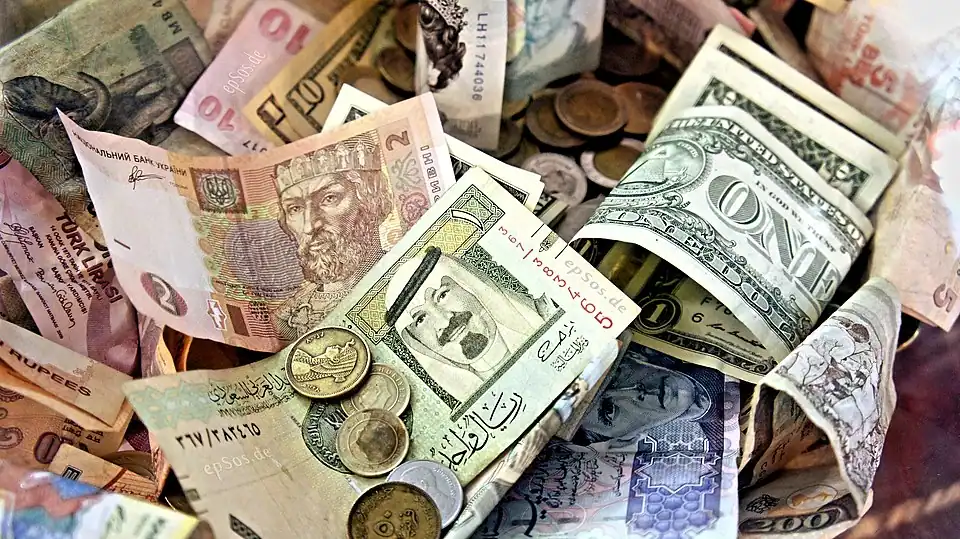Image Credit: wikimedia.org
The foreign exchange (Forex) market is one of the most dynamic and widely traded markets in the world, with an average daily turnover exceeding $6 trillion. Understanding the key factors that influence currency trading is essential for any trader hoping to achieve success in this fast-paced environment. Trading international currencies is not simply about predicting price movements; it involves analyzing economic indicators, political events, and market sentiment, as well as mastering technical and fundamental analysis.
This article will dive into the crucial elements to consider when trading international currencies, providing valuable insights to help traders make informed decisions.
Understanding Currency Pairs and Exchange Rates
To navigate the forex market, traders must first grasp the concept of currency pairs. In the forex market, currencies are traded in pairs, such as the EUR/USD (Euro/US Dollar) or GBP/JPY (British Pound/Japanese Yen). The first currency in the pair is called the base currency, and the second is the quote currency. For example, if the EUR/USD exchange rate is 1.20, it means that 1 Euro is equivalent to 1.20 US Dollars.
Understanding how exchange rates are determined is another fundamental aspect of currency trading. Exchange rates fluctuate due to various factors, including economic data, geopolitical events, and market sentiment. For instance, if a country experiences strong economic growth, its currency may appreciate relative to others. Similarly, political instability or uncertainty can lead to a depreciation of a nation’s currency. These fluctuations are what create trading opportunities, but they also require traders to stay informed about both macroeconomic conditions and global events. Check out Saxo Broker for more information.
Key Economic Indicators
When it comes to currency trading, economic indicators are vital tools that help traders assess the relative strength of a currency. One of the most important indicators is interest rates. Central banks use interest rate policies to control inflation and stimulate or slow down economic activity. A rise in interest rates often strengthens a currency because it makes investments in that currency more attractive to foreign investors, thus increasing demand for it. Conversely, a cut in interest rates can weaken a currency by reducing the returns available to investors.
Inflation rates also play a crucial role in currency value. Inflation erodes the purchasing power of a currency, and if a country experiences high inflation, its currency may lose value relative to others. Traders monitor inflation closely, as central banks may raise interest rates to counter high inflation, which can affect the currency’s strength.
Gross Domestic Product (GDP) and employment data are other key indicators to consider. A growing economy, as indicated by increasing GDP, typically signals a strong currency because it suggests economic health and prosperity. Similarly, employment reports, especially those related to the unemployment rate, can provide insights into the overall health of the economy. High employment levels typically correlate with a stable and strong economy, which supports a strong currency.
Geopolitical Events and Market Sentiment
Currency trading is deeply influenced by geopolitical events, as they can introduce volatility and unpredictability to the market. Elections, changes in government policies, and international conflicts can significantly impact the value of a country’s currency. For example, political instability in a country can lead to investor uncertainty and a flight from the country’s currency, resulting in depreciation. Traders must stay informed about political developments globally to anticipate any potential shifts in currency values due to these events.
Market sentiment, the overall attitude of investors toward a particular currency, is another significant factor in currency trading. Market sentiment can be shaped by a range of factors, including economic data, political news, and global events. A positive economic outlook or a successful trade deal, for instance, can foster bullish sentiment and drive the value of a currency higher. On the other hand, negative sentiment, such as fears of economic downturns or trade wars, can lead to a currency sell-off.
Technical and Fundamental Analysis
Successful currency traders often combine both technical and fundamental analysis to inform their trading decisions. Technical analysis involves studying historical price movements and using chart patterns, technical indicators, and trends to predict future price movements. It is based on the idea that price patterns tend to repeat themselves over time and that historical data can help traders identify potential buying or selling opportunities. For example, traders might use tools like moving averages, Relative Strength Index (RSI), or Bollinger Bands to identify overbought or oversold conditions.
On the other hand, fundamental analysis focuses on the underlying economic, social, and political factors that influence currency prices. This type of analysis looks at macroeconomic indicators such as GDP, inflation rates, and interest rates, as well as geopolitical events and market sentiment. By analyzing these factors, traders can get a better understanding of a currency’s intrinsic value and potential for appreciation or depreciation.
Conclusion
Successful currency trading is about much more than just predicting price movements. It requires a comprehensive understanding of key economic indicators, geopolitical events, technical and fundamental analysis, risk management strategies, and market sentiment. By developing a sound trading plan, staying disciplined, and continuously learning, traders can increase their chances of success in the dynamic world of forex trading.
Also Read: CFD Trading and Market Volatility: Strategies for Turbulent Times
